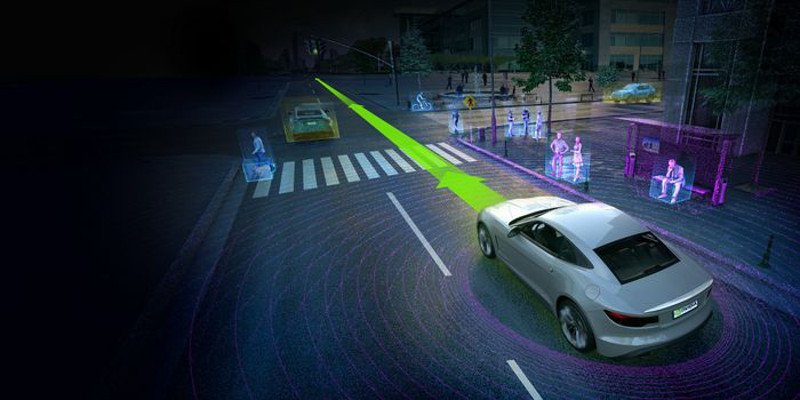 NEWS
NEWS
 NEWS
NEWS
 NEWS
NEWS
At the Consumer Electronics Show (CES), currently taking place in Las Vegas this week, the focus is predominantly on automotive technology, including tech to enhance the in-car experience and autonomous vehicle systems.
One year after announcing its Drive CX and first-gen Drive PX computational platform, Nvidia Corp. took to the stage at CES earlier this week to show off its next-gen Drive PX 2 – a ‘supercomputer’ and deep-learning platform for self-driving cars.
The liquid cooled Nvidia Drive PX 2 consists of 12 CPU cores and four GPUs, packing 8 teraflops of processing power. With more than 10 times the computational power of the first-gen Drive PX, the Drive PX 2 is as powerful as six Titan X graphics cards, or the equivalent to that of 150 MacBook Pros.
According to Nvidia, the Drive PX 2 can deliver up to 24 trillion deep learning operations per second, enabling it to rapidly learn how to deal with commonplace driving challenges, such road debris, erratic human drivers, construction zones, and more. Problem areas that prove challenging for traditional computer vision techniques, such as bad weather like rain, snow and fog, and poor lighting conditions like sunrise, sunset and nighttime, are all addressed through deep-learning.
Nvidia Drive PX 2 computational platform for self-driving cars
Drive PX 2 combines data from 12 video cameras and lidar, radar and ultrasonic sensors to detect and identify objects and plot a safe route for the car, but all the processing power needs software to back it up. That comes in the form of Nvidia’s DriveWorks software and Nvidia DriveNet, a deep neural network.
DriveNet contains the equivalent of 37 million neurons and has been trained to recognize 120 million objects to date and will continue learning and adding objects over time.
Nvidia is providing automakers with an end-to-end platform, allowing them to train a neural network and deploy it to autonomous vehicles in rapid time.
According to Nvidia, the combination of its GPUs and CUDA processing technology can speed up deep learning processes by as much as 20 to 40 times, dramatically shortening deep learning training cycles. “What would have taken a year now took a week. What took a month took a day,” said Jen-Hsun Huang, Nvidia co-founder and CEO.
Volvo will be the first automaker to ship Drive PX 2 in 100 upcoming test vehicles while Audi, BMW, Mercedez-Benz and Daimler are already carrying out tests.
Support our open free content by sharing and engaging with our content and community.
Where Technology Leaders Connect, Share Intelligence & Create Opportunities
SiliconANGLE Media is a recognized leader in digital media innovation serving innovative audiences and brands, bringing together cutting-edge technology, influential content, strategic insights and real-time audience engagement. As the parent company of SiliconANGLE, theCUBE Network, theCUBE Research, CUBE365, theCUBE AI and theCUBE SuperStudios — such as those established in Silicon Valley and the New York Stock Exchange (NYSE) — SiliconANGLE Media operates at the intersection of media, technology, and AI. .
Founded by tech visionaries John Furrier and Dave Vellante, SiliconANGLE Media has built a powerful ecosystem of industry-leading digital media brands, with a reach of 15+ million elite tech professionals. The company’s new, proprietary theCUBE AI Video cloud is breaking ground in audience interaction, leveraging theCUBEai.com neural network to help technology companies make data-driven decisions and stay at the forefront of industry conversations.